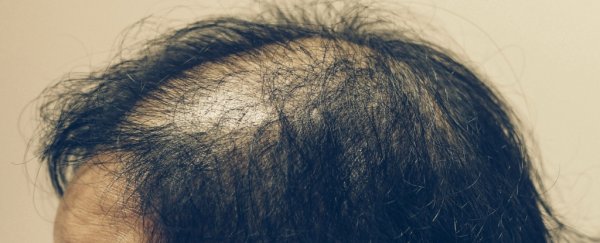There's a plethora of treatments for balding on the market. But what if you could regrow your own hair out of your own head by simply applying an ointment?
In a paper that seems (almost) straight out of the plot of The Peanut Butter Solution, South Korean scientists describe a treatment for hair loss that doesn't just prevent hair loss - it promotes the growth of new follicles in hairless mice.
Led by professor Choi Kang-yeol of Yonsei University, a team of researchers discovered a protein responsible for hair loss in androgenetic alopecia, also known as pattern baldness - the most common type of hair loss in both men and women.
"We have found a protein that controls the hair growth and developed a new substance that promotes hair regeneration by controlling the function of the protein," Kang-yeol said.
"We expect that the newly developed substance will contribute to the development of a drug that not only treats hair loss but also regenerate damaged skin tissues."
The offender seems to be CXXC-type zinc finger protein 5 (CXXC5), which acts as a negative regulator on the Wnt/β-catenin pathway, which is linked to hair regeneration and wound healing.
When CXXC5 binds with a protein called the Dishevelled protein, it prevents follicle development and hair regrowth.
A new biomaterial developed by the team interferes with this binding process. It's called PTD-DBM, and when applied to the bare skin of bald mice for 28 days, new follicles developed.
But there's a caveat. Well, several. But one at a time. First, the title of the paper is "Targeting of CXXC5 by a Competing Peptide Stimulates Hair Re-growth and Wound Induced Hair Neogenesis."
We've covered the CXXC5 targeting, but the second part is important too - wound-induced hair neogenesis. As a 2007 paper documented, wounds greater than 5 millimetres (0.2 inches) in diameter to the full depth of the skin on mice could, in some circumstances, develop new follicles as they healed.
A 2013 paper found that, in humans, a treatment for androgenetic alopecia was significantly more effective when accompanied by microneedling - rolling very fine needles over the skin to puncture it.
The strongest result that Kang-yeol's team saw was after combining wound-induced hair neogenesis with PTD-PBM and valproic acid, usually used to treat seizures, bipolar, schizophrenia and migraines. In this instance it was used topically to activate the Wnt/β-catenin pathway.
So there's a threefold action. The wounds induce the generation of follicles; the valproic acid stimulates the cell pathway linked to the development of follicles; and the PTD-PBD inhibits prevents CXXC5 from interfering with the follicular development process.
It may be some time before the treatment becomes readily available, however. A 2015 study showed promise for using stem cells to promote the growth of follicles, but still seems to be some way off.
New treatments often take time to develop, not least because they need to go through clinical trials to determine their safety - and, as we know, using mouse models to study how well things might respond in humans doesn't always work.
Nevertheless, the team's research is progressing apace. They're currently testing their new substance on animals to determine whether it's toxic, before proceeding to human trials.
Their research has been published in the Journal of Investigative Dermatology.
